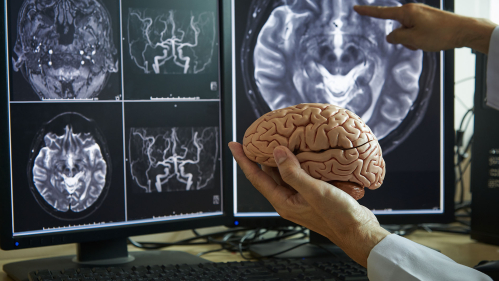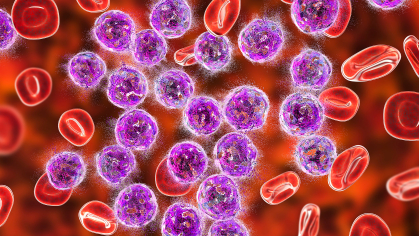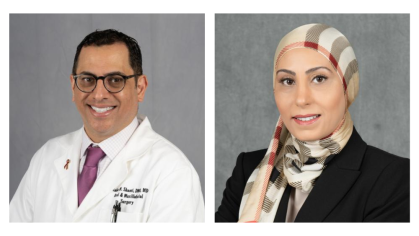New Model Identifies Best Candidates for Epilepsy Surgery

A simple scoring system from researchers at Rutgers Health and other institutions may help doctors predict which patients will likely become seizure-free after minimally invasive epilepsy surgery.
A study in the Annals of Clinical and Translational Neurology introduces a predictive model that could expand access to surgical treatment for the neurological disorder that causes recurring seizures.
Epilepsy affects nearly 3 million people in the United States, with roughly one-third not responding adequately to medications, according to the Centers for Disease Control and Prevention. For these patients, surgery to remove or disable the part of the brain causing seizures can be an effective treatment, but predicting which patients will emerge seizure-free has been difficult.
The researchers developed their model based on data from 101 patients who underwent stereotactic laser amygdalohippocampotomy (SLAH), a procedure that uses a laser (laser interstitial thermal therapy, or LITT) to target and disable a small area in the temporal lobe of the brain that causes seizures in many patients.
"We've pried open the therapeutic window with this minimally invasive approach," said Robert Gross, senior author of the study and chair of the Department of Neurosurgery at the Rutgers Robert Wood Johnson and New Jersey Medical School and senior vice president of Neurosurgical Services at RWJBarnabas Health. "Now the question is, how well do we think the patients are going to do with the information we have before doing the procedure?"
The researchers identified eight clinical factors associated with a higher likelihood of becoming seizure-free after the SLAH procedure. The factors include the patient’s history, certain abnormalities in their MRI, lesions and febrile seizures.
Instead of relying on complex statistical models, the team created a simple ordinal score by assigning one point for each factor present. This approach outperformed other predictive models, including those based solely on MRI findings or more complex multivariate analyses.
"The concordance of multiple clinical data points better predicts seizure freedom after SLAH than any one data point alone," Gross said.
Patients scoring 6 or higher on the 8-point scale had a 70 percent to 80 percent chance of becoming seizure-free after SLAH, comparable with the success rates of conventional open surgery. Those with lower scores had progressively lower chances of a positive outcome.
Researchers also found that even patients without clear MRI evidence of scars in the brain’s temporal lobe – historically considered a key indicator for surgical success – could still be good candidates for SLAH if they had multiple other positive factors.
This new approach could help expand access to surgical treatment for epilepsy, which experts say is underutilized. Many patients hesitate to undergo invasive brain surgery because of fears of cognitive side effects. The SLAH procedure, being less invasive, may be more appealing, especially if patients can get a clearer picture of their chances for success.
Gross described using the new scoring system with a recent patient: "I was able to go to this young woman and her mother and say, ‘OK, let's look at this. You've got a 71 percent chance of being seizure-free.’ That is a much more compelling number to tell someone than 60 percent."
Although doctors could use the model to help guide decisions now, the researchers said it still needs further validation on a data set of patient outcomes other than the one they used to create it. They also noted that the scoring system doesn't account for all factors that might influence surgical outcomes, such as the exact ratio of abnormal brain activity between hemispheres or specific seizure characteristics.
Despite these limitations, the study authors said their work represents a significant step in personalizing epilepsy treatment. By providing a more nuanced and accurate prediction of surgical outcomes, this new tool could help more patients with drug-resistant epilepsy find effective relief through minimally invasive surgery.
As research continues, further refinements to the model may incorporate additional data such as detailed seizure semiology and neuropsychological profiles, potentially leading to even more precise predictions and better patient outcomes.


